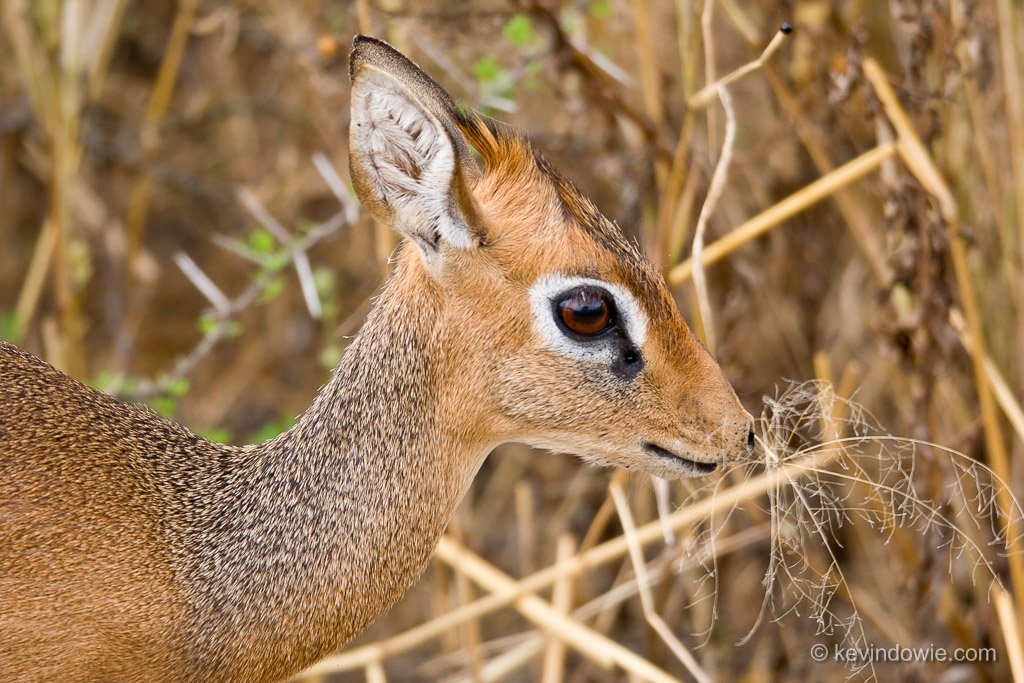This image was taken whilst on safari in Tarangire National Park in Tanzania, at 9.00 a.m. on a morning in June, 2008, using a Canon 20D set to ISO 100 and mounted to an 800mm F5.6 super-telephoto lens at F5.6 and 1/200 second. The original RAW file was converted in Adobe Camera Raw on the default settings, no further colour or contrast adjustments have been made. In Photoshop CS3, slight sharpening was given to the animal and the seed head it’s sniffing, whilst a very slight gaussian blur was given to the background.
The image is presented here full frame.

The Dik-dik is the smallest of the antelope species being only slightly larger than a domestic cat and tends to shelter in scrub and tall grass. The species tends to be fairly skittish, and given its habitat, it was difficult to get a clear, unobscured, photograph. This particular animal was about 10 to 12 metres from my safari vehicle and was only clearly visible for a few seconds before retreating behind bushes and out of sight.
Telephoto lenses for wildlife photography
For wildlife photography, long telephoto lenses are particularly useful for several reasons. Firstly, and perhaps most obviously, is the reach of the lens. Wildlife such as the timid Dik-dik will not tolerate a closer approach that would be necessary with a shorter focal length lens if one is to get anything other than an “environmental” shot. Further to that, whilst on safari in most of the African national parks, almost all photography has to be carried out from within a vehicle due to the possible presence of predator species such as lions. Another advantage of using a telephoto, particularly when used at the widest aperture, is the narrow depth of field. A narrow depth of field enables selective focus on the subject whilst allowing the background to become blurred. In this instance, the animal was close to its background and so the background blurring effect wasn’t as great as I would have liked.
This image is one of many which I made whilst in Tanzania and will be part of a photo gallery and slideshow which will be published in the near future. The lens used (the 800mm) is only just becoming available and is the subject of a separate article that examines image quality achieved with the lens and also some of the considerations for transporting and using super telephotos. ~KD
